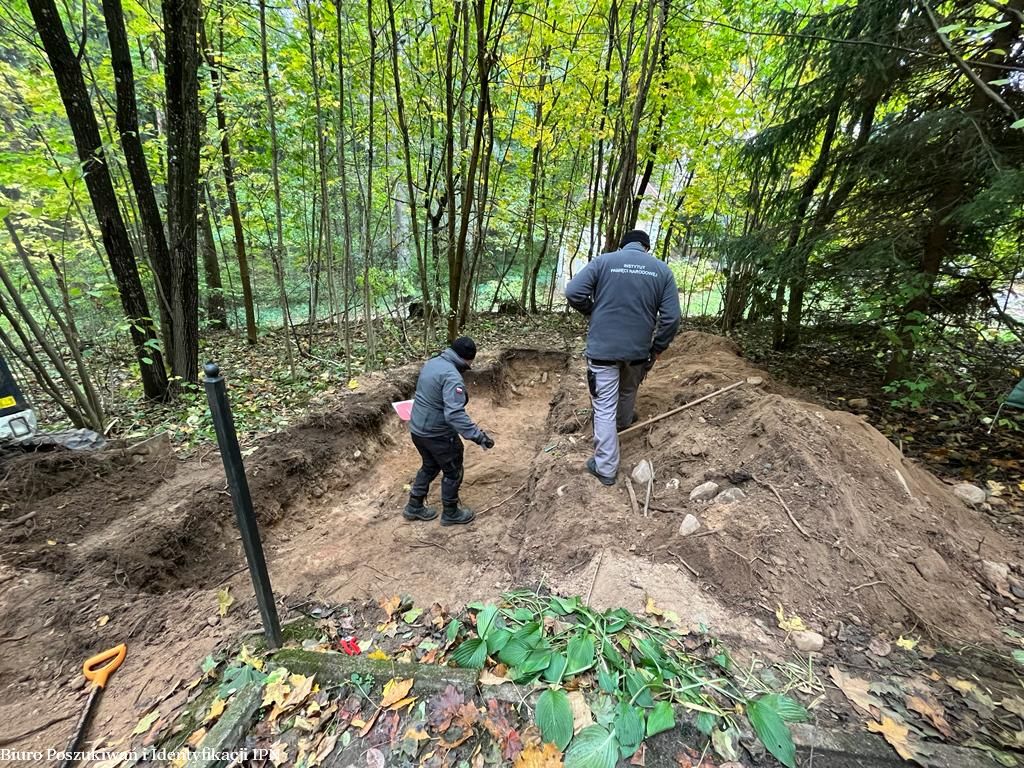Employees of the Search and Identification Bureau of the Institute of National Remembrance (IPN) have completed the second stage of work in Vilnius. During the search in Vilnius Calvary, the remains of 9 people, probably soldiers of the Home Army, were found.
The research confirmed that Polish soldiers killed in the Battle of Kravchunai were buried there. Their remains were not found during a negligently conducted exhumation in 1979.
The fallen soldiers of the Home Army were buried on the grounds of the Vilnius Calvary in mass graves, next to the statue of the Blessed Virgin Mary. According to various sources, between 30 and 76 people were buried there. Less than twenty years after the war, the Soviets destroyed the Calvary grounds, demolishing chapels, and religious buildings.
In 1979, the soldiers’ burial site was exhumed. The exhumed remains were moved to the nearby cemetery next to the Calvary Church. In 1990, thanks to the efforts of the Union of Poles in Lithuania, stone plaques were erected at the site of the original grave, bearing the names or pseudonyms of nearly 40 fallen soldiers.
Archaeological research at the Vilnius Calvary was undertaken as a result of the efforts of the families of the fallen soldiers and the Polish state authorities. Employees of the Institute of National Remembrance (IPN) established a wider list of names of soldiers killed in the Battle of Kravchūnai that were not included on the commemoration. In addition, the results of historical research indicated that the exhumations carried out at Vilnius Calvary in 1979 did not include all the remains of the soldiers buried there.
During the first stage of this year’s work, it was determined that the graves of the soldiers were located outside the perimeter of the existing commemoration. During the second stage, in October, the IPN team found one grave with the partially destroyed remains of Polish soldiers. Military buttons, eagles, medals, fragments of uniforms and military equipment were also found in the grave. Work at Vilnius Calvary will be continued next spring.
Arkadiusz Słomczyński





